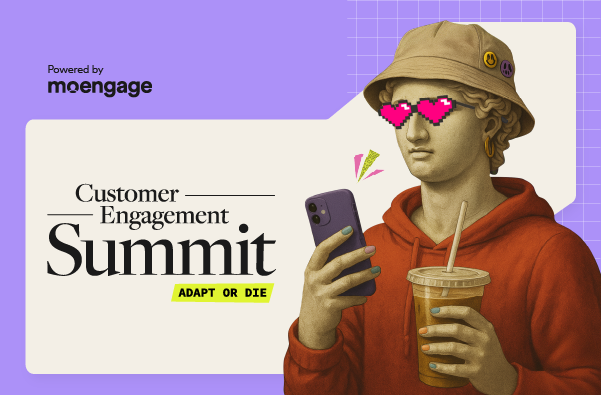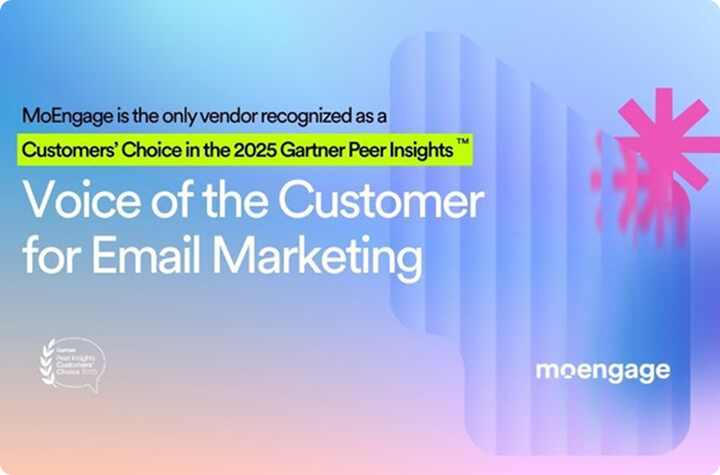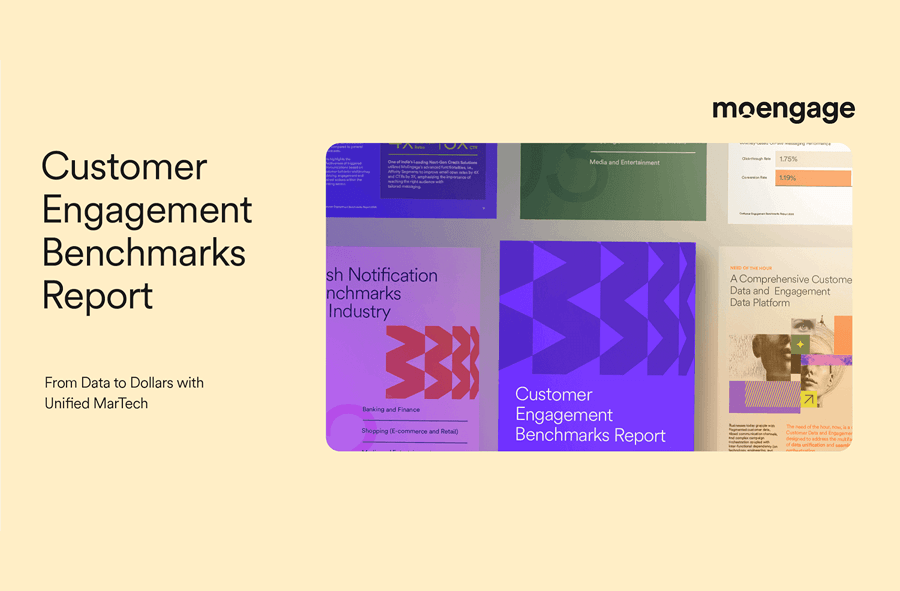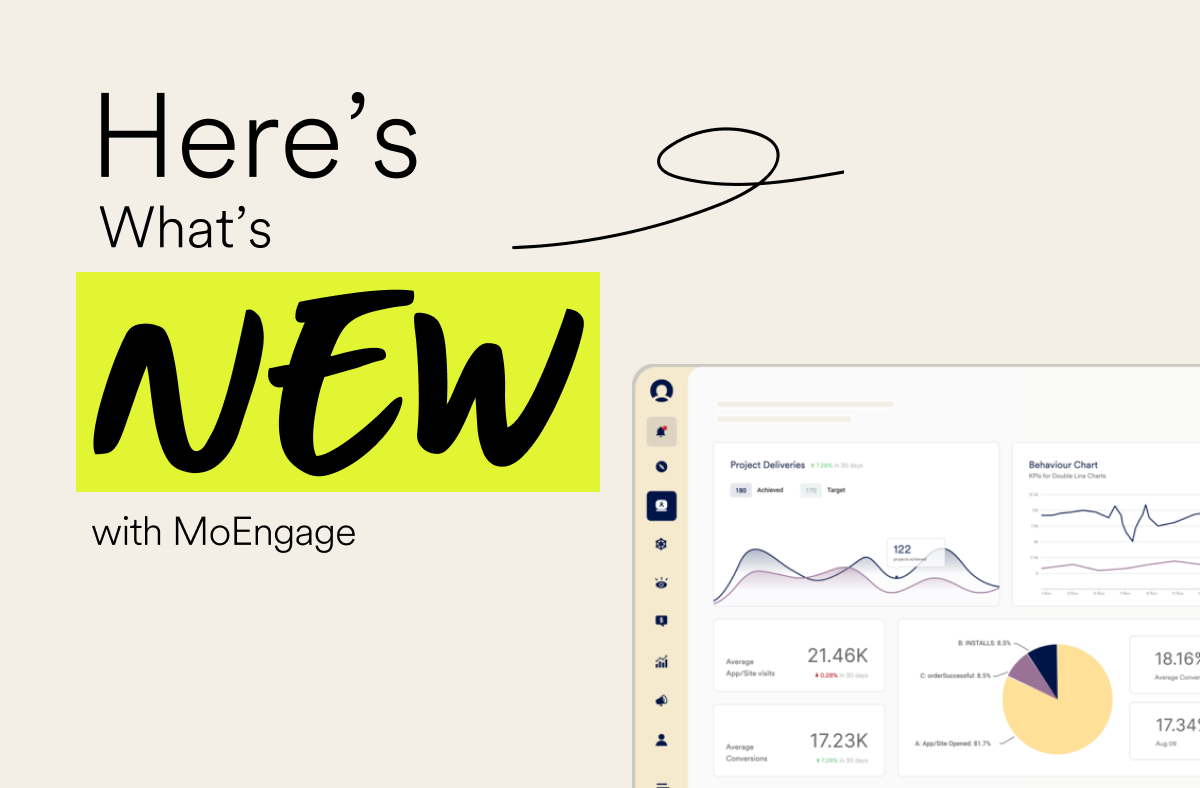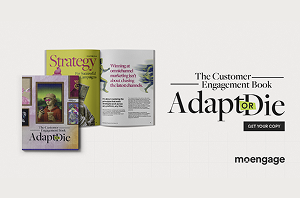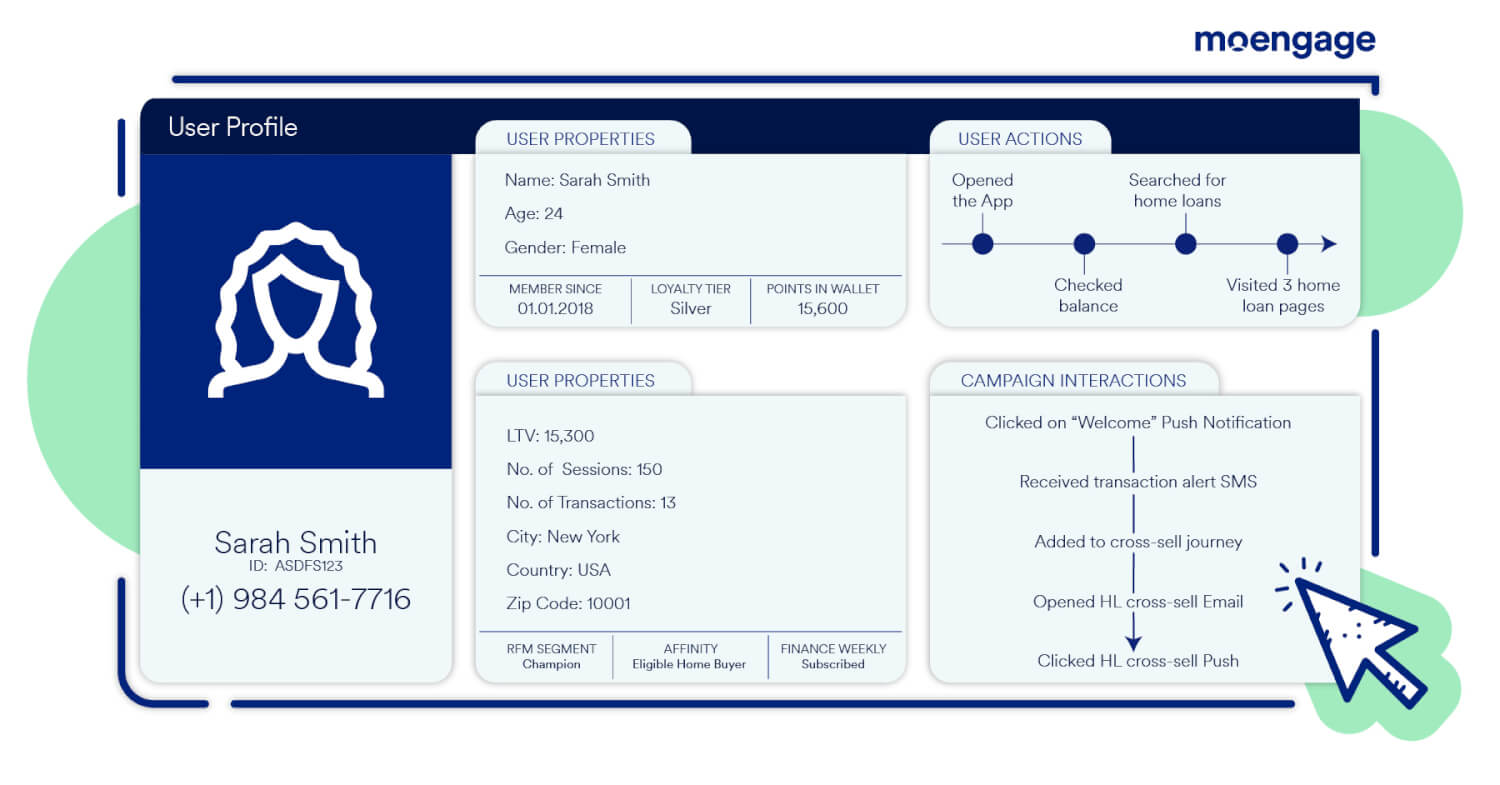The Current State of Personalization in North America: Trends and Insights
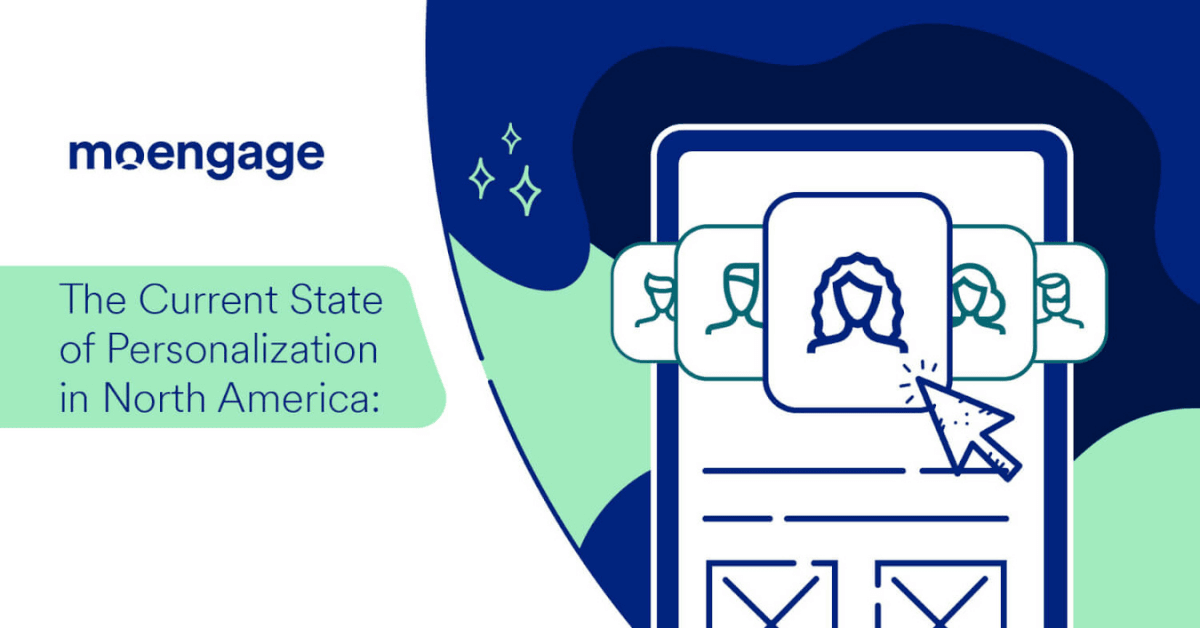
Reading Time: 4 minutes
Personalization is no longer a buzzword but a crucial strategy to ensure an exceptional customer experience. According to our recent report, Personalization Pulse Check 2023: North America, 56% of consumers in North America want a curated shopping experience.
Most customers today expect brand communication that is customized beyond their name and location. They want brands to provide them with dynamic customer experiences based on purchase history, app and website activity, affinity, and more.
Brands Succeeding at Hyper-personalization
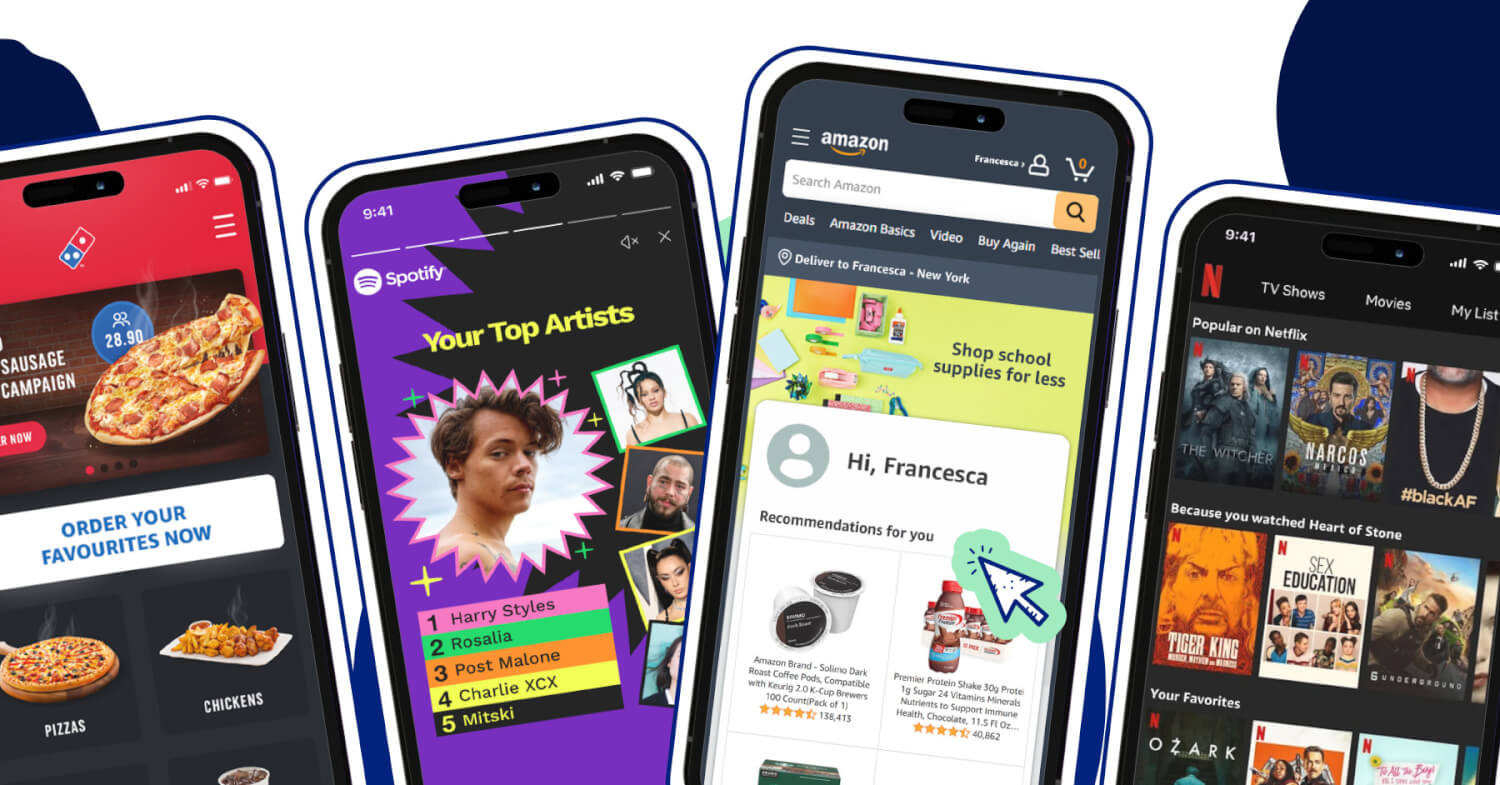
Here are some examples of brands that have successfully built business models around hyper-personalization:
- Amazon has almost 38% share of the U.S. E-commerce market, making it the country’s leading online retailer.
- Domino’s is the biggest pizza chain in the US, with a 42% market share nationwide.
- Netflix commands the single largest share (39%) of monthly active users (MAUs) in the U.S.
- Spotify is the largest music streaming service in the world, with a global market share of 31%.
The popularity of these brands can be attributed to advanced algorithms, user-friendly interfaces, seamless cross-device experiences, and continuous testing and optimization to provide timely and personalized experiences.
Current Personalization Trends and How Leading Brands Are Achieving Them
Let’s look at some of the key personalization trends brands like Amazon and Domino’s follow and the strategies they use to win over customers:
1. Hyper-personalization:
- Over 32% of North American consumers say they would choose one brand over another if brand communication is unrelated to their current shopping behavior.
- How successful are brands in implementing hyper-personalization? To execute in-depth personalization, brands invest in advanced artificial intelligence and machine learning technologies. These tools analyze vast amounts of data to personalize recommendations, offers, content, and messaging based on each customer’s behavior and preferences.
2. Real-time Personalization:
- Twenty percent of North American customers are frustrated with a brand because of the lack of timely updates on customer service inquiries, purchases, and shipping details.
- How top brands are personalizing at scale, in real time: Brands are leveraging customer interactions, behavioral data, and more to send their customers tailored brand communication in real time.
3. Ethical Personalization:
- More than 66% of North American customers are comfortable or slightly comfortable with sharing personal information with a brand as long as it offers them a better experience. Furthermore, over 49% of customers want brands to base the personalized shopping experience on their purchase history and product preferences.
- How leading brands are walking the tightrope between personalization and privacy: Customer-centric brands are using first-party data and complying with data privacy regulations. They are also transparent about their data privacy policies and security measures.
| Want more insights on personalization?
Download our Personalization Pulse Check: North America Report. |
Here are some ways you can elevate the customer experience:
Leverage Unified Customer Profiles for Deeper Customer Insights
Hyper-personalization begins with a unified customer view. This involves collecting and analyzing data from various sources and touchpoints to create a 360° view of each customer.
Using a powerful customer engagement platform can help you overcome siloes in data and build a comprehensive customer profile for all your customers. This will enable you to create seamless and personalized cross-device experiences for your customers.
Implement Multichannel Orchestration for Seamless Customer Journeys
Customer journeys are complex. Consumers interact with your brand across multiple online and offline touchpoints on their path to conversion. Multichannel orchestration involves knowing, understanding, and acting on how consumers interact with your brand at a particular time and on a specific device/touchpoint so that you can thread a multi-touch strategy to optimize conversions.
For example, a customer who previously purchased on your website can be sent personalized recommendations for similar products via email. If they missed your email, you could show them targeted ads on social media or send push notifications through your mobile app. By coordinating these interactions across multiple channels, you can increase the likelihood of conversion and increase brand loyalty.
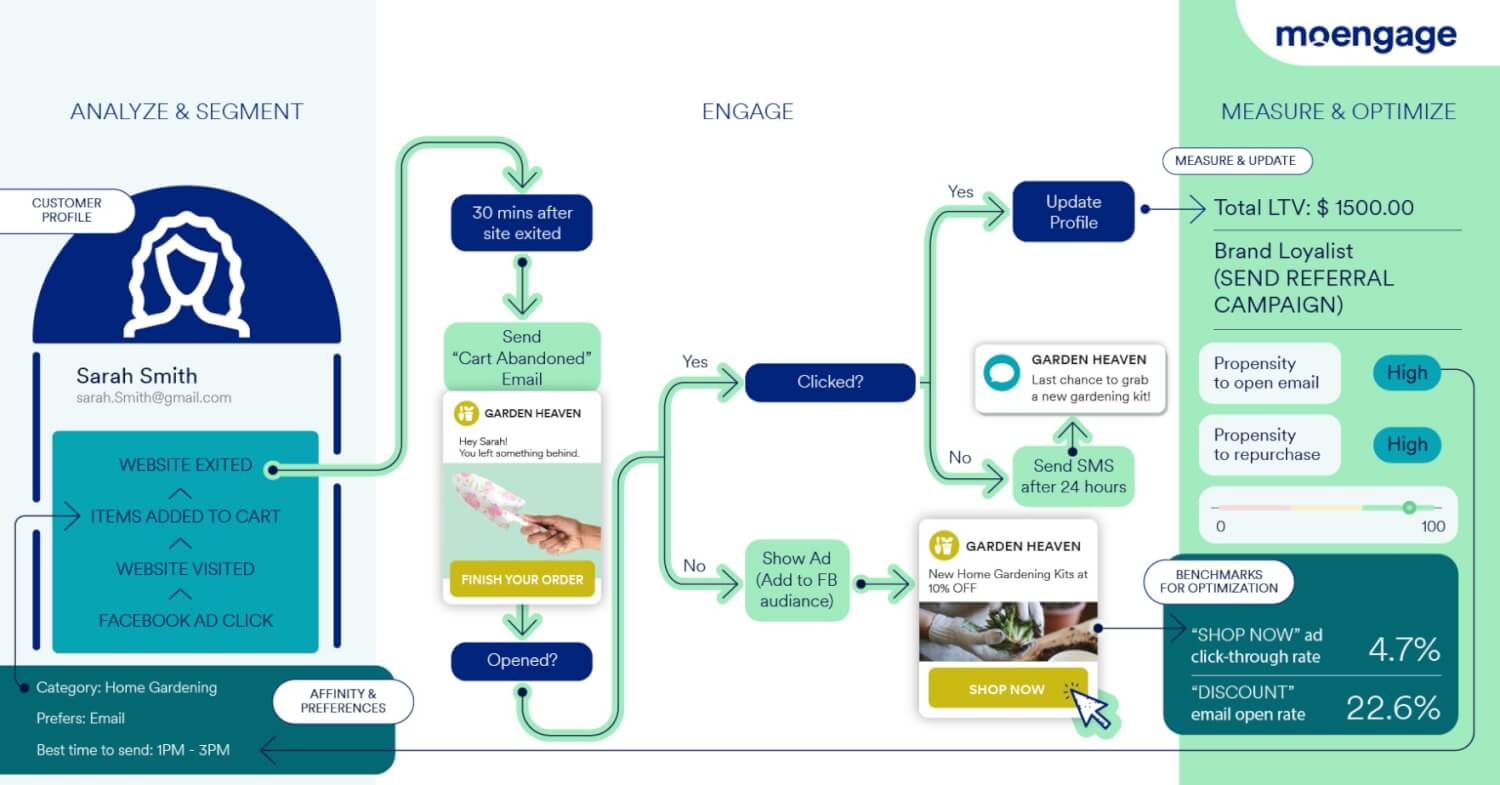
When orchestrating multichannel engagement, here are some things to remember:
- Use a well-integrated and reliable Martech stack to strengthen the unified customer profiles, to help you strategize and optimize your multichannel orchestration efforts.
- Leverage first-party data gathered from owned digital channels to personalize the customer experience while fostering deeper connections with your customers without being intrusive.
- Implement automated flows to streamline customer journeys, add multiple touchpoints, and optimize drop-offs.
- Enable ‘best time to send’ and ‘most preferred channel’ to reach your customers at the right place and time.
Power Your Hyper-personalization Strategies With Artificial Intelligence
Artificial intelligence can enable you to analyze vast amounts of data quickly and offer highly personalized recommendations, offers, content, and messaging based on each customer’s behavior and preferences. Furthermore, they can help you to dynamically adapt the brand communication based on customer interactions, behaviors, and feedback.
For example, you can use artificial intelligence to dynamically experiment with multiple customer journeys and identify the ideal path for each customer in terms of the best-performing channel(s), messaging frequency, and messaging sequence.
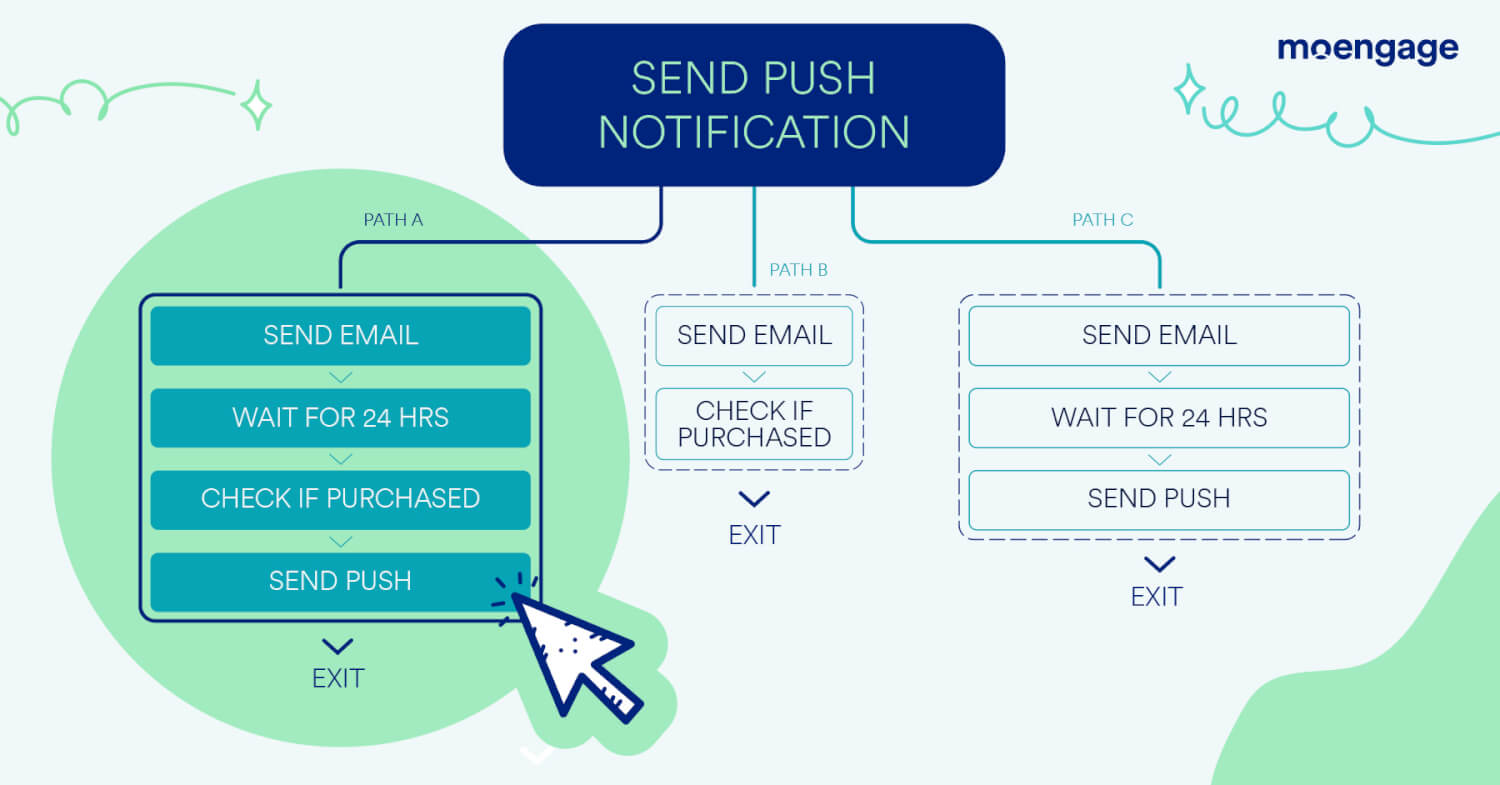
Similarly, you can also use Generative AI to generate customer segments, derive insights, and create personalized content just by submitting prompts.
In a Nutshell
Customers in North America expect brands to offer them highly personalized experiences in real time while respecting their privacy. Hence, you must invest in the right tools, technologies, and strategies to create seamless and relevant customer experiences across all touchpoints.
And don’t forget that data and artificial intelligence will be your ammunition to ace personalization in the current digital landscape—not just to meet but to exceed your customers’ expectations.
Download the Personalization Pulse Check: North America report to learn about more personalization trends and strategies in North America.


